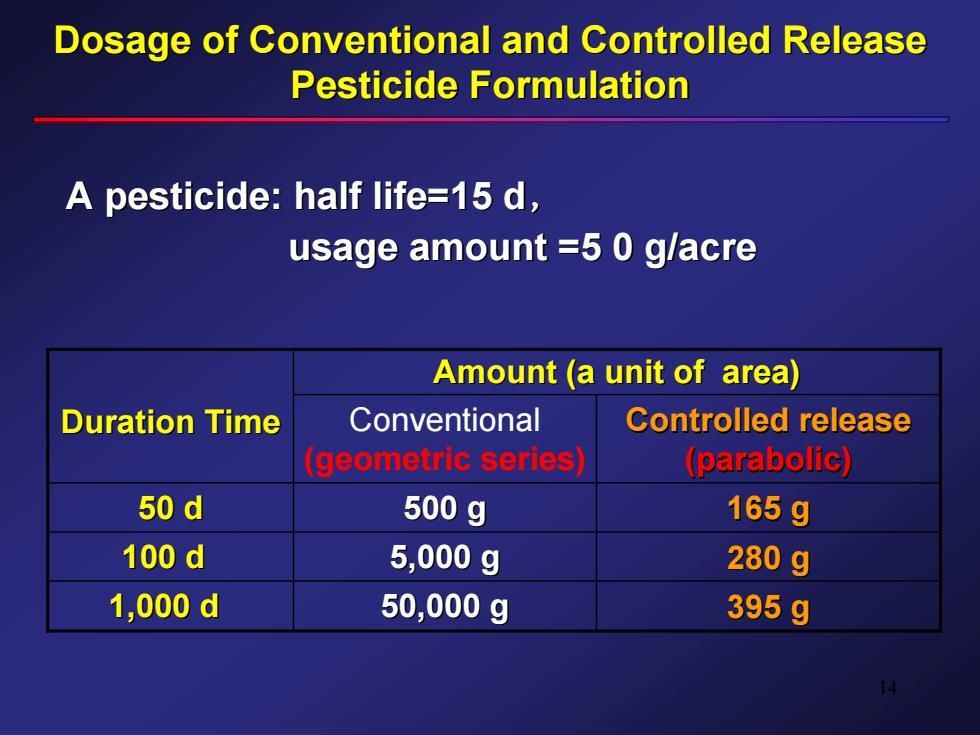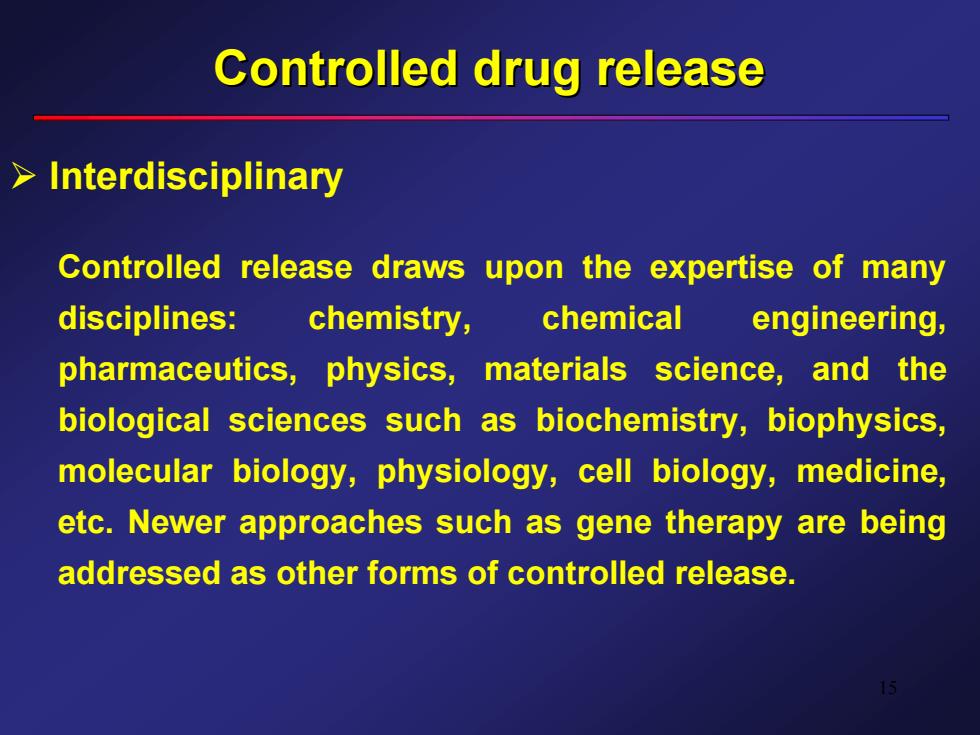
Controlled drug release > Objective To prolong the duration of action of an active agent,to minimize adverse reactions,or to maximize efficacy. This objective may be achieved by control of diffusion, reaction rates or other physicochemical parameters through the use of rate-controlling materials, manipulation of the appropriate biological barriers, targeting,or manipulation of the fate of the agent once beyond these barriers
12 ¾ Objective To prolong the duration of action of an active agent, to minimize adverse reactions, or to maximize efficacy. This objective may be achieved by control of diffusion, reaction rates or other physicochemical parameters through the use of rate-controlling materials, manipulation of the appropriate biological barriers, targeting, or manipulation of the fate of the agent once beyond these barriers. Controlled drug release Controlled drug release

Conventional and Controlled Release Formulation 10000 Conventional pesticide 100 Waste of pesticide B 0 Controlled release pesticide 100 150 200 The effective duration (d) 3
13 Conventional and Controlled Release Formulation Conventional and Controlled Release Formulation

Dosage of Conventional and Controlled Release Pesticide Formulation A pesticide:half life=15 d, usage amount =5 0 g/acre Amount (a unit of area) Duration Time Conventional Controlled release (geometric series) (parabolic) 50d 500g 165g 100d 5,000g 280g 1,000d 50,000g 395g
14 Amount (a unit of area) Amount (a unit of area) Duration Time Duration Time Conventional (geometric series) Controlled release Controlled release (parabolic) (parabolic) 50 d 500 g 165 g 100 d 5,000 g 5,000 g 280 g 1,000 d 50,000 g 50,000 g 395 g A pesticide: half life=15 d A pesticide: half life=15 d , usage amount =5 0 g/acre usage amount =5 0 g/acre Dosage of Conventional and Controlled Release Dosage of Conventional and Controlled Release Pesticide Formulation Pesticide Formulation

Controlled drug release Interdisciplinary Controlled release draws upon the expertise of many disciplines: chemistry, chemical engineering, pharmaceutics,physics,materials science,and the biological sciences such as biochemistry,biophysics, molecular biology,physiology,cell biology,medicine, etc.Newer approaches such as gene therapy are being addressed as other forms of controlled release
15 ¾ Interdisciplinary Controlled release draws upon the expertise of many disciplines: chemistry, chemical engineering, pharmaceutics, physics, materials science, and the biological sciences such as biochemistry, biophysics, molecular biology, physiology, cell biology, medicine, etc. Newer approaches such as gene therapy are being addressed as other forms of controlled release. Controlled drug release Controlled drug release

Controlled drug release The science of controlled release has become a research discipline whose future depends on a thorough understanding of the interactions between the delivery system and the biological or environmental barriers to delivery of active substances
16 The science of controlled release has become a research discipline whose future depends on a thorough understanding of the interactions between the delivery system and the biological or environmental barriers to delivery of active substances. Controlled drug release Controlled drug release